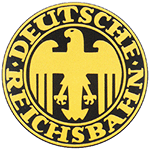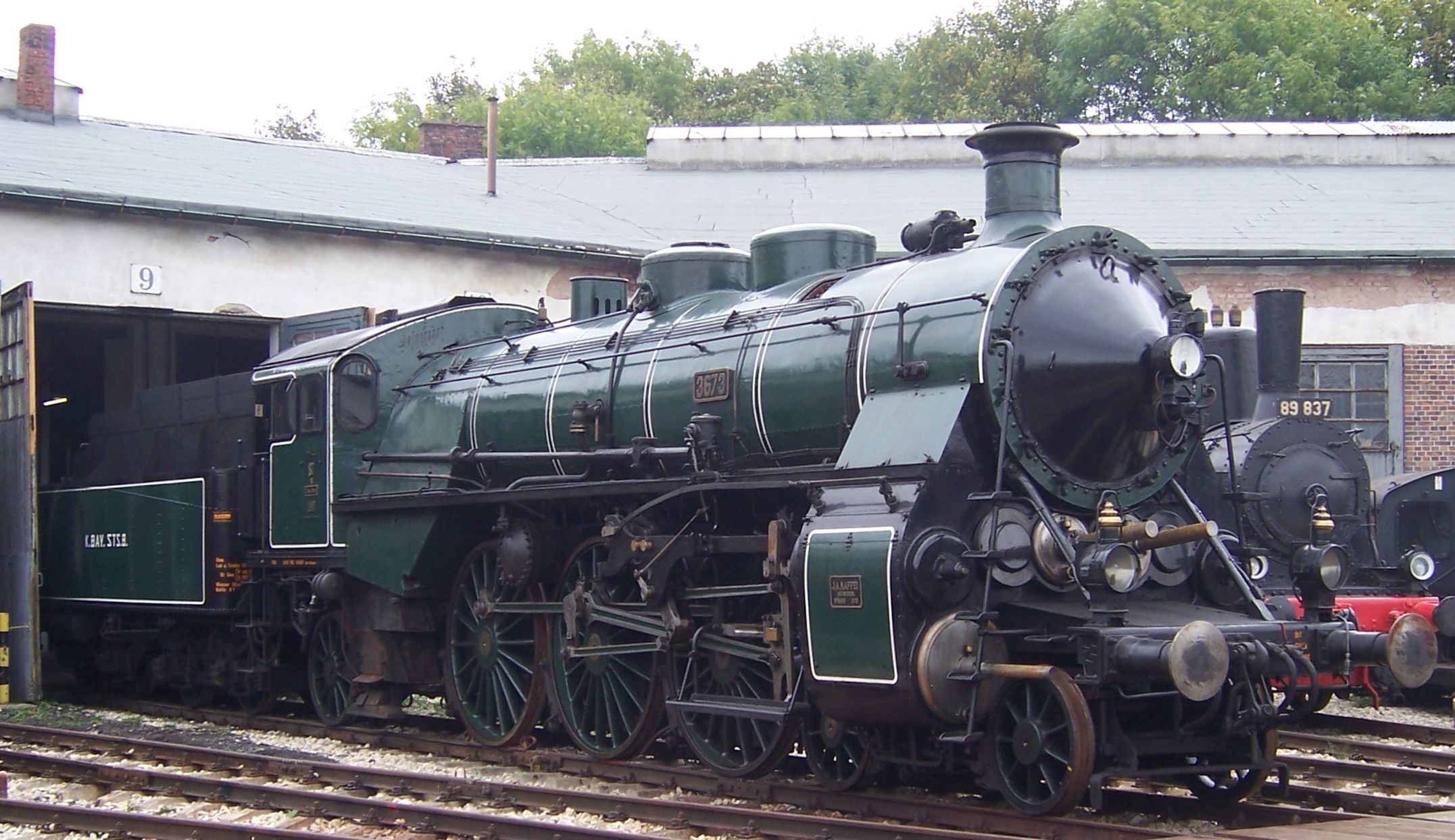Specific Item Information: Minitrix One-Time series. 18.5 class, type 2'C 1'h4v of the Deutsche Reichsbahn Gesellschaft (DRG), Bavarian group administration. Design as original row S 3/6 in green national railway coat in condition to 1925.
The locomotives of the S 3/6 series were among the most successful constructions in railway history. The machines proved themselves not only excellently in Bavaria, but also in the high-quality long-distance traffic beyond the borders of Germany. Due to the good experience with the later designated BR 18.4 locomotive was the German Reichsbahn in the years 1923 to 1930 at Maffei and Henschel further machines in order, which were initially also under the type designation S 3/6 out, then as BR 18.5. In this series of construction, the eye was no longer in sharpened wind cutting form, but just executed cab front. It gave these machines, together with the longer-acting boiler, a completely different appearance. The power could be increased to 1830 hp.
Features: Details to the minitrix MHI model steam locomotive S 3/6 GVB lane N scale 1/160: Two-wire DC. The tender has a 14-pin digital connector. Locomotive and tender made of die-cast metal. Bell armature motor with flywheel in the boiler. 14-pin interface in the tender for digital decoder 66840. Loco and tender short-coupled. 3 axles powered by coupling rods, traction tires. For the first time with LED tip signal. Length over buffer (LüP): 134 mm. Epoch II.
The locomotives of the S 3/6 series were among the most successful constructions in railway history. The machines proved themselves not only excellently in Bavaria, but also in the high-quality long-distance traffic beyond the borders of Germany. Due to the good experience with the later designated BR 18.4 locomotive was the German Reichsbahn in the years 1923 to 1930 at Maffei and Henschel further machines in order, which were initially also under the type designation S 3/6 out, then as BR 18.5. In this series of construction, the eye was no longer in sharpened wind cutting form, but just executed cab front. It gave these machines, together with the longer-acting boiler, a completely different appearance. The power could be increased to 1830 hp.
Features: Details to the minitrix MHI model steam locomotive S 3/6 GVB lane N scale 1/160: Two-wire DC. The tender has a 14-pin digital connector. Locomotive and tender made of die-cast metal. Bell armature motor with flywheel in the boiler. 14-pin interface in the tender for digital decoder 66840. Loco and tender short-coupled. 3 axles powered by coupling rods, traction tires. For the first time with LED tip signal. Length over buffer (LüP): 134 mm. Epoch II.
Model Information: This is a great locomotive. It seems the early models were mechanized with a Faulhaber high-efficiency motor (bell-shaped armature motor) with flywheel, and the newer versions have a coreless motor with flywheel in the boiler.
The coreless engine makes for absurdly quiet operation. The locomotive and tender are made of diecast metal. Some models carry built-in digital decoder and a sound generator with the formats DCC, Selectrix, and Selectrix 2. Locomotive and tender have a short coupling. 3 axles powered through side rods, traction tires.
The coreless engine makes for absurdly quiet operation. The locomotive and tender are made of diecast metal. Some models carry built-in digital decoder and a sound generator with the formats DCC, Selectrix, and Selectrix 2. Locomotive and tender have a short coupling. 3 axles powered through side rods, traction tires.
DCC Information: Models that carry decoders: Decoder is NOT dual mode. DCC-only operations. Selectrix protocol also supported.
All versions that do not come with factory installed decoder accept NEM socket decoders.
All versions that do not come with factory installed decoder accept NEM socket decoders.
Prototype History: The Class 18 locomotives were a group of related German steam locomotives operated by the Deutsche Reichsbahn between the wars. All of these locomotives were express tender units and had been taken over from the state railways. Each locomotive subclass was slightly different, but all shared a 4-6-2 (Pacific) wheel arrangement. These included: Class 18.0: Saxon XVIII H, Class 18.1: Württemberg C, Class 18.2: Baden IV f, Class 18.3: Baden IV h, Class 18.4-5: Bavarian S 3/6, Class 18.6: PKP Class Pm36, and Class T 18.10: turbine locomotives.
Road Name History:  The Deutsche Reichsbahn, also known as the German Reich Railway or the German Imperial Railway, was the name of the German national railway created from the railways of the individual states of the German Empire following the end of World War I.
The Deutsche Reichsbahn, also known as the German Reich Railway or the German Imperial Railway, was the name of the German national railway created from the railways of the individual states of the German Empire following the end of World War I.
The company was founded in 1920 as the Deutsche Reichseisenbahnen when the Weimar Republic, formally known as Deutsches Reich (German Reich, hence the usage of the Reich in the name of the railway), took national control of the German railways, which had previously been run by the German states. In 1924 it was reorganised under the aegis of the Deutsche Reichsbahn-Gesellschaft (DRG), a nominally private railway company, which was 100% owned by the German state. In 1937 the railway was reorganised again as a state authority and given the name Deutsche Reichsbahn (DRB). After the Anschluss in 1938 the DR also took over the Bundesbahn Osterreich (BBO, Federal Railway of Austria).
The East and West German states were founded in 1949. East Germany took over the control of the DR on its territory and continued to use the traditional name Deutsche Reichsbahn, while the railway in West Germany became the Deutsche Bundesbahn (DB, German Federal Railway). The Austrian Osterreichische Bundesbahnen (OBB, Austrian Federal Railways) was founded in 1945, and was given its present name in 1947.
In January 1994, following the German union, the East German Deutsche Reichsbahn merged with the West German Deutsche Bundesbahn to form Germany's new national carrier, Deutsche Bahn AG, technically no longer a government agency but still a 100% state-owned joint stock company.

The company was founded in 1920 as the Deutsche Reichseisenbahnen when the Weimar Republic, formally known as Deutsches Reich (German Reich, hence the usage of the Reich in the name of the railway), took national control of the German railways, which had previously been run by the German states. In 1924 it was reorganised under the aegis of the Deutsche Reichsbahn-Gesellschaft (DRG), a nominally private railway company, which was 100% owned by the German state. In 1937 the railway was reorganised again as a state authority and given the name Deutsche Reichsbahn (DRB). After the Anschluss in 1938 the DR also took over the Bundesbahn Osterreich (BBO, Federal Railway of Austria).
The East and West German states were founded in 1949. East Germany took over the control of the DR on its territory and continued to use the traditional name Deutsche Reichsbahn, while the railway in West Germany became the Deutsche Bundesbahn (DB, German Federal Railway). The Austrian Osterreichische Bundesbahnen (OBB, Austrian Federal Railways) was founded in 1945, and was given its present name in 1947.
In January 1994, following the German union, the East German Deutsche Reichsbahn merged with the West German Deutsche Bundesbahn to form Germany's new national carrier, Deutsche Bahn AG, technically no longer a government agency but still a 100% state-owned joint stock company.
Brand/Importer Information: Trix is a German company that originally made Trix metal construction sets. one of its co-founders was Stephan Bing, the son of the pioneer toy-maker industrialist Ignaz Bing. In 1935 the company began producing the electrically powered model trains that it became famous for, under the Trix Express label. Prior to the outbreak of World War II the Trix company produced a small range of fairly unrealistic AC powered three rail models running at 14 volts.
N gauge models under the Minitrix brand were made from the late 1960s mostly of European prototypes (German and British primarily). North American prototypes were also manufactured and marketed under the Aurora "Postage Stamp" brand; later these items were sold under the American Tortoise, Model Power and Con-Cor brands. Trix sometimes utilized North American consultants to aid in the design of this portion of the product line. The "Hornby Minitrix' brand was used in the 1980s for a short lived range of British outline models using the earlier product tooling.
Trix's owner in the 1980s and 1990s was Mangold, which went bankrupt in the late 1990s and Märklin purchased the assets in January 1997. In part, this purchase was a reflection of Märklin's need for added production capacity; Trix had been manufacturing certain items for Märklin in previous years. The purchase was also in response to the earlier purchase of the Karl Arnold company by the Italian company Rivarossi; Märklin were very keen to take over Trix market share in 2-rail H0 and especially Minitrix, until then Märklin had not marketed N gauge models. In 2003, Märklin introduced its first N gauge models under the well established Minitrix brand. A number Märklin H0 scale three-rail AC locomotives have also been introduced in two-rail DC versions under the Trix logo and many models are shared between the two brands.
From Wikipedia
N gauge models under the Minitrix brand were made from the late 1960s mostly of European prototypes (German and British primarily). North American prototypes were also manufactured and marketed under the Aurora "Postage Stamp" brand; later these items were sold under the American Tortoise, Model Power and Con-Cor brands. Trix sometimes utilized North American consultants to aid in the design of this portion of the product line. The "Hornby Minitrix' brand was used in the 1980s for a short lived range of British outline models using the earlier product tooling.
Trix's owner in the 1980s and 1990s was Mangold, which went bankrupt in the late 1990s and Märklin purchased the assets in January 1997. In part, this purchase was a reflection of Märklin's need for added production capacity; Trix had been manufacturing certain items for Märklin in previous years. The purchase was also in response to the earlier purchase of the Karl Arnold company by the Italian company Rivarossi; Märklin were very keen to take over Trix market share in 2-rail H0 and especially Minitrix, until then Märklin had not marketed N gauge models. In 2003, Märklin introduced its first N gauge models under the well established Minitrix brand. A number Märklin H0 scale three-rail AC locomotives have also been introduced in two-rail DC versions under the Trix logo and many models are shared between the two brands.
From Wikipedia
Item created by: gdm on 2016-08-14 08:29:57. Last edited by gdm on 2019-09-12 09:54:36
If you see errors or missing data in this entry, please feel free to log in and edit it. Anyone with a Gmail account can log in instantly.
If you see errors or missing data in this entry, please feel free to log in and edit it. Anyone with a Gmail account can log in instantly.











